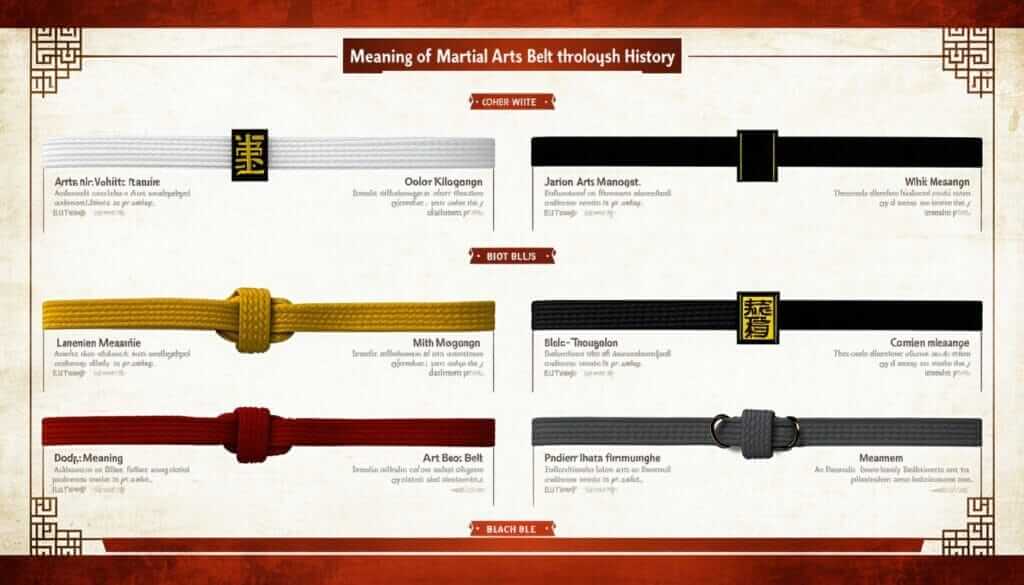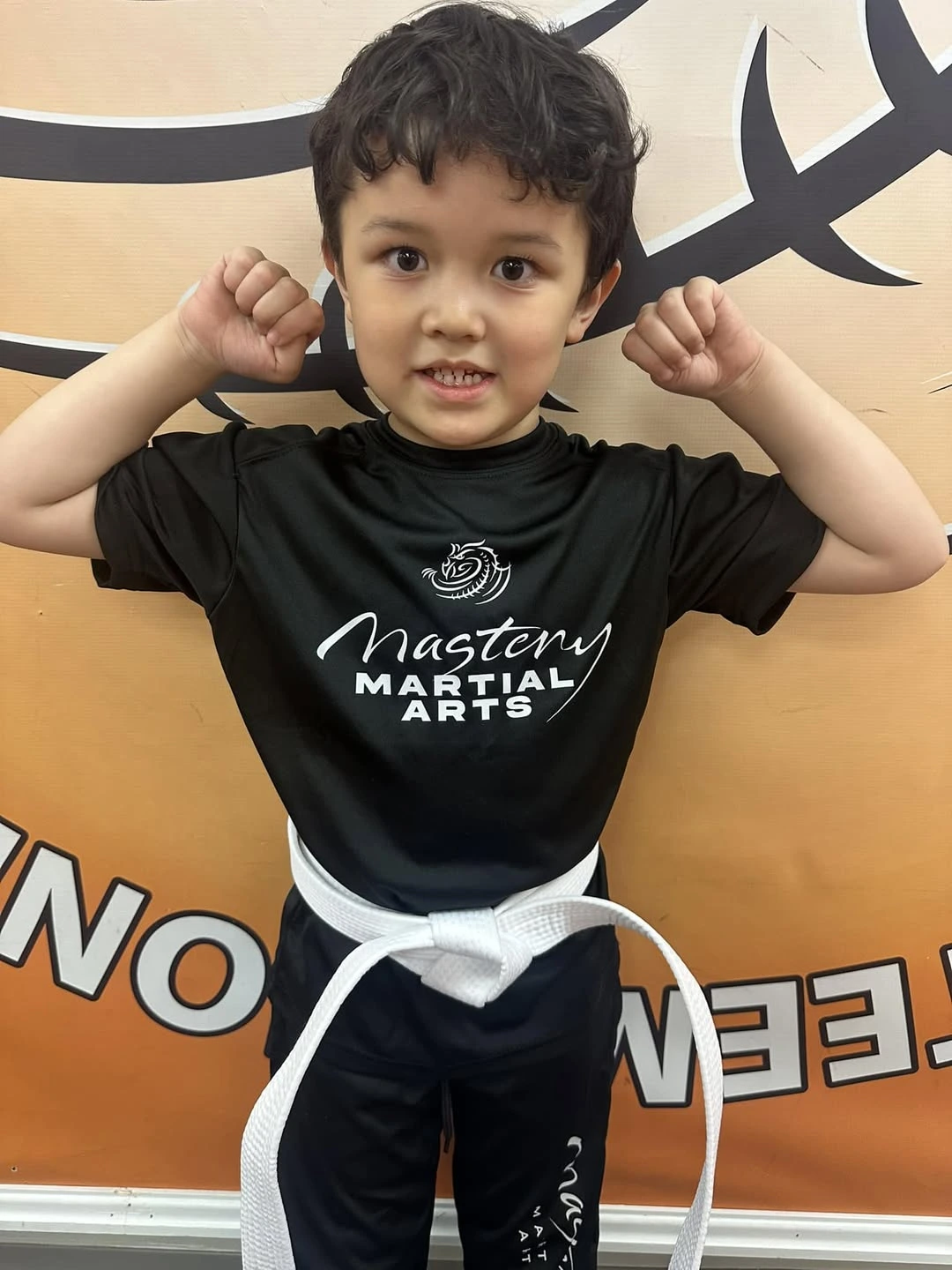The Origins of Belt Ranks
Introduction to Belt Ranking Systems
Martial arts often uses a system of belt ranks — think colors like white and black — to showcase experience. This all started with styles like Shotokan Karate in Japan. Originally, things were pretty simple: just white belts for students starting out and black belts for those who were all-knowing instructors. Over the years, things got a bit more colorful and complex to show various expertise levels.
Evolution of Belt Colors
Belt colors took a turn towards the rainbow thanks to Dr. Jigoro Kano, who founded Judo back in the 1880s. He stuck to basics with white belts for newbies and black for the seasoned pros and trainers. That was the kick-off for a ranking system that would grow into a kaleidoscope of colors.
Fast forward to the 1930s and 40s, and Mikinosuke Kawaishi, a Judo master from Japan, had a bright idea. He tossed more colors into the mix to help students feel that level-up thrill between beginners and masters. Soon, different martial arts like Taekwondo and Jiu-Jitsu adopted this idea too.
These colorful developments led to various ranking systems in martial arts, with each organization often doing its own thing. Here’s a peek at how it all progresses from that first white belt to the revered black:
| Belt Color | Year Introduced | Notes |
|---|---|---|
| White | 1880s | Just starting out. |
| Black | 1880s | The big leagues. |
| Colored (Various) | 1930s – 40s | Recognizing progress along the way. |
Dive deeper into how these belts became a thing and how different martial arts styles do it differently by checking out the martial arts belt ranking history and what’s unique about belt ranks in Taekwondo history. Knowing these stories not only keeps you clued in on martial arts traditions but also ramps up your appreciation for the craft.
Symbolism of Belt Colors
Decoding what each martial arts belt color means helps track a student’s path and growth in training. Each belt color signals different steps in learning and improvement.
White and Black Belts
The white belt stands for a fresh start, capturing the wide-eyed wonder of someone just starting out. It shows that a student is eager to dive into new challenges and soak up knowledge. Typically, a student will move from a white belt to their next belt in around three months, though everyone’s pace can vary.
At the other extreme, you find the black belt. Lots of folks think this means the end of training, but it’s actually the start of a new chapter—teaching. Reaching the first degree black belt, or “Dan,” signals deep commitment to keep learning and sharing the art, highlighting why practice, dedication, and patience are so crucial.
| Belt Color | Symbolism |
|---|---|
| White | Fresh start, curiosity, open to learning |
| Black | Leadership in teaching, continues learning |
Yellow, Orange, and Green Belts
The yellow belt signals the birth of understanding, where students start to grasp the basics of martial arts techniques.
The orange belt radiates with energy and excitement. Students here are building up confidence in their growing skills.
Then comes the green belt, showing steady upward growth. By now, students have a firmer grasp of martial moves and display better technique.
These levels are about effort, clarity, and a personal drive that differs for each student.
| Belt Color | Symbolism |
|---|---|
| Yellow | Beginning of understanding |
| Orange | Confidence and excitement |
| Green | Growth and sharpening skills |
Blue and Brown Belts
Moving up to the blue belt, students show solid understanding and control in martial arts. This rank is a nod to their improved skills and loyalty to their craft.
The brown belt means you’ve hit a mature stage, mastering more intricate techniques, and gearing up for what’s next—the black belt. This indicates a serious focus on the martial arts journey.
All these belt colors paint a picture of each student’s dedication and growth, providing a visible way to celebrate what they’ve achieved and where they’re headed.
| Belt Color | Symbolism |
|---|---|
| Blue | Growing expertise and precision |
| Brown | Mature skills, preparing for black belt |
For a deeper dive into what martial arts belts signify, check out the martial arts belt colors meaning. This resource further unravels the stories and teachings tied to each ranking.
Progression To Mastery
Getting to a black belt in martial arts isn’t just about showing off a fancy belt—it’s about a legacy of skill and personal triumphs. It’s a badge of courage and growth.
Requirements for Black Belt
Snagging a black belt is like getting a golden ticket in the martial arts galaxy. It’s celebrated as the pinnacle in many circles, but hey, some have higher stations, like Judo’s red and white belt. Reaching this level means proving you’re not a one-trick pony; you gotta show you’re sharp in skills, moves, and sparring. For Karate, this often means sticking to it for around five years, which is no short feat and certainly not for the faint-hearted.
| Requirement | Description |
|---|---|
| Time Commitment | About five years of dedicated practice |
| Skill Proficiency | Mastery in moves, forms, and sparring |
| Mental Grit | Showing grit and overcoming hurdles |
Challenges of Black Belt Pursuit
Chasing that black belt dream isn’t a Sunday stroll. It’s a grueling test of both body and mind. Martial arts folks jump through hoops that stretch their mental limits, making sure this isn’t just a phase but a serious commitment. It’s not only about getting those kicks and punches right but also about building patience and toughness. Folks face down the heat in competitions and sparring sessions, charging towards their highest self.
Ain’t no resting on laurels, either—belt tests come in hot as a gauge for skill and readiness. These can be tough cookies, underscoring the importance of hanging in there and sweating it out. The road to black belt glory underscores the core values typical of martial arts—discipline, respect, and ownership of one’s journey.
Curious about the ins and outs of belt systems? Dive into our piece on martial arts belt ranking history.
Belt Levels and Expertise
Dan Ranks in Karate
The Dan ranking in Karate isn’t just about collecting belts—it’s a measure of dedication, skill, and passion for this ancient art. From the 1st Dan, or Shodan, to the high and mighty 10th Dan, each level is a badge of honor that marks a martial artist’s long hours, sweat, and maybe a few tears. To snag that black belt, you’re looking at around five years of kickin’ and punchin’, all while honing both mind and muscle.
| Dan Rank | Name | What It Means |
|---|---|---|
| 1st Dan | Shodan | You’re officially off the starting block. |
| 2nd Dan | Nidan | Now we’re talking! You’ve got some real moves. |
| 3rd Dan | Sandan | A role model for the white belts looking up to you. |
| 4th Dan | Yondan | A real pro, with a deep bag of tricks. |
| 5th Dan | Godan | Master of sparring and sensei whisperer. |
| 6th Dan | Rokudan | Right-hand of the dojo leader. |
| 7th Dan | Nanadan | When sensei trust you, students trust you. |
| 8th Dan | Hachidan | Join the elite club with other top martial artists. |
| 9th Dan | Kyudan | Legends don’t get any bigger than this. |
| 10th Dan | Judan | The black belt of black belts, a Karate sage. |
Meaning of Each Belt Color
Belts aren’t just colorful waistbands; they’re symbols of the marathon you’re running in martial arts. Each color bursts with meaning, marking the milestones of your martial art journey. Let’s take a peek behind the fabric:
| Belt Color | What It Means |
|---|---|
| White | You’re ready to kick things off, in the most literal sense. |
| Yellow | You’ve seen some light, and you’re eager to shine. |
| Orange | A fire’s been lit—learning is in full swing! |
| Green | Steady as you go, things are starting to click. |
| Blue | You’ve got the hang of things, like really got it. |
| Brown | Finessing those techniques like nobody’s business. |
| Black | Top dog status with skills on skills (Mastery Martial Arts). |
Climbing this rainbow of belts takes guts and grind. Martial arts schools don’t just hand these out like candy; they have ruled about time spent training and rigorous skill tests. If you’re curious for more belt mysteries and lore, do check our stories about martial arts belt ranking history and the symbolism behind the colors.
Unique Belt Systems
Differences Across Martial Arts Styles
Belt ranks in martial arts are like snowflakes — no two systems are exactly alike. Each discipline has its own mix of belt colors and meanings. The whole idea of ranking got rolling with Shotokan Karate and other Japanese martial arts. Back in the day, there were just two belts: white for learners and black for teachers. But like an old TV series that gets a reboot, it evolved into the colorful schemes we see now. According to the folks at Mastery Martial Arts, that’s how it all went down.
Take a look at Karate, for example. Their belt colors do a little rainbow dance, moving from:
| Color | Order |
|---|---|
| White | 1st |
| Yellow | 2nd |
| Orange | 3rd |
| Green | 4th |
| Blue | 5th |
| Purple | 6th |
| Brown | 7th |
| Black | 8th |
Judo sticks to colors too, but they might weigh more on how you perform in competitions alongside your karate chops.
Then there’s Taekwondo, where they throw in extra shades like reds and stripes, depending on who’s calling the shots. Each system isn’t just a set of colors; it’s about mixing traditions with different thoughts on getting good and winning battles, inside and outside the dojo.
Varied Belt Progression Paths
Climbing the belt ladder ain’t a one-size-fits-all gig in martial arts, either. Moving from a newbie to rocking a yellow or orange belt might be a matter of months. But snagging those brown and black belts? That’s more of a long-haul flight. How fast you climb depends on—
- The art you’re diving into
- The dojo’s vibe
- How you’re doing personally
Most places want you to show off what you’ve learned, ace a few tests—both written and in action—and maybe even slug it out a bit before leveling up.
In Karate world, once you hit black, you’re just getting started. You’ve got ranks in “Dan,” running from 1st (Shodan) to 10th (Judan). Each level spotlights your ever-growing skill and your commitment to the cause. It’s like peeling back layers of tradition and finding an ever-deeper appreciation for what it all means in life.
Loads of martial arts schools bring something special to belt promotions, making the whole process richer. Understanding these belt systems gives you more than just insight into a sport—it’s a peek into the heart and soul of the practice. Want to chew on more of this ranking stuff? Jump on over to our take on martial arts belt ranking traditions.
Life Lessons from Belt Progression
Values Taught Through Belt Promotion
Moving up the ranks in martial arts isn’t just about perfecting kicks and punches. It’s a journey that instills patience, perseverance, humility, and respect. Think of each belt as a badge of honor—proof that you’ve not only mastered certain skills but also deepened your understanding of the martial arts ethos and committed yourself to lifelong growth.
| What You Learn | What’s It About? |
|---|---|
| Patience | Hang tight—good things take time! Career belt climbers know the journey is long, but each wait’s worth it. |
| Perseverance | You’ve got to keep going, even when the going gets tough. Sticking with it is key. |
| Humility | At every level, there’s a lesson: You’re never done learning here. Stay humble. |
| Respect | Honor is huge—towards teachers, mates, and the martial tradition itself. |
As students ascend the belt ladder, they’re encouraged to integrate these values not just in the dojo but in everyday life as well. They’re not just working on martial arts skills; they’re building character that sticks long after they leave the mat.
Importance of Belt Promotion Tests
Formal tests for earning a new belt? Big deal alert! These tests are a rite of passage, measuring not just moves but brainpower and grit under pressure.
| What’s Tested? | Why It Matters |
|---|---|
| Skills Check | Show off those moves you’ve practiced till your muscles memorized them! |
| Brain Power | Your grasp on martial arts lore is just as important as swing power. |
| Mental Guts | Can you keep it cool when things heat up? Time to show off mental toughness. |
These tests signify pivotal growth moments, cementing discipline and resilience in the art. Achieving a new belt isn’t just about bragging rights but a boost in confidence, proving that relentless effort and a thirst for knowledge pave the way to success. For those curious about how belt rankings came to be, dive into the history of martial arts belt ranking.




